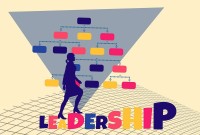- Home
- Business Processes
- Industry Knowledge
- Aerospace Industry
- Automotive Industry
- Banking Domain
- BFSI Industry
- Consumer/ FMCG Industry
- Chemicals Industry
- Engineering & Construction
- Energy Industry
- Education Domain
- Finance Domain
- Hospitality Domain
- Healthcare Industry
- Insurance Domain
- Retail Industry
- Travel and Tourism Domain
- Telecom Industry
- Leadership Skills
- eLearning
- Home
- Leadership Skills
- Change Management
- Directive Leadership Style
Directive Leadership Style
This style is characterized by leaders making decisions for others and expecting followers to follow instructions. The directive leader is adept at giving instructions, setting expectations, and establishing timelines and performance standards. However, it is possible for the same leaders to display both directive and supportive behavior as per the demands of the situation.
What is Directive Leadership?
This style is an autocratic style focused on the high task/low relationship. The leader defines the roles of followers and tells them what, when, where, and how to do different tasks. One way communication flows from the leader to the followers. Leaders tell their people exactly what to do, and how to do it. In this approach, the leader focuses his interactions with followers on goal achievement and spends a smaller amount of time using supportive behaviors. Task behavior reflects how much a leader is concerned with the actual task at hand and ensuring that those following him complete it. Using this style, a leader gives instructions about what and how goals are to be achieved by the subordinates and then supervises them personally.
Activities associated with directive behavior are guiding and structuring followers’ activities, planning, scheduling, and assigning responsibilities, defining roles and communication patterns for followers, motivating and conveying expertise, monitoring and following up on assignments, clarifying expectations, goals, and work methods. Transformational leaders can be directive or participative, authoritarian, or democratic based on the demands of the situation.
Characteristics of Democratic Leadership:
- Directive behaviors help followers accomplish goals by getting clear directions, establishing their goals and objectives, evaluation criteria, timelines, roles, responsibilities, and specific sub-tasks to achieve the goals.
- A directive leader sets clear standards of performance and makes the rules and regulations clear to subordinates.
- Being directive ensures accuracy and eliminates time-consuming mistakes
- Rewards may also be increased as needed and role ambiguity decreased (by telling them what they should be doing).
Situations where Effective:
- This may be used when the task is unstructured and complex and the follower is inexperienced.
- From the follower’s perspective, this kind of behavior provides role clarity, clear expectations, satisfaction with work and supervisor, satisfaction with the organization, lower stress, and increased performance.
- This style is used at length within the law enforcement and military communities as well as on manufacturing assembly lines, providing a means of managing a diverse group of people that span a wide range of experience and maturity levels.
- This style is generally appropriate for professionals who are in the early stage of their career and need to learn organizational behaviors.
- This increases the follower's sense of security and control and hence is appropriate to the situation.
Situations where Not Effective:
- The directive leader usually aims to restrict or limit the creativity or initiative of the follower.
- This style of leadership avoids collaborating or empowering others
- Directive behaviors are most of the time is one-way communication that specifies what is to be done and the task can be accomplished and assigning the responsibility for doing it.
Related Links
You May Also Like
-
Participative leadership is one of the most effective styles and creates higher productivity, better contributions from group members, and increased group morale. The democratic leadership style consists of the leader sharing the decision-making abilities with group members by promoting the interests of the group members. Learn more about this leadership style and situations when it is effective.
-
This style is characterized by leaders making decisions for others and expecting followers to follow instructions. The directive leader is adept at giving instructions, setting expectations, and establishing timelines and performance standards. However, it is possible for the same leaders to display both directive and supportive behavior as per the demands of the situation.
-
Authoritarian Leadership Style
Although generally considered as a traditional, outdated, and non-preferred style of leadership, the autocratic style still can be used effectively in certain situations. It is a leadership style characterized by individual absolute control over a group. If you work for an autocratic leader, your job is usually to do what you're told. Learn more about this style and situations where this could be an effective style to use and when to avoid this type of approach. Analyze the characteristics of this style to evaluate if your followers consider you an authoritarian leader!
-
Emergent leadership occurs when a group member is not appointed or elected as leader, but rather that person steps up as the leader over time within-group interactions. Have you ever faced challenges in getting accepted into your new role of position as a leader? Groups don't automatically accept a new "boss" as a leader. Emergent leadership is what you must do when taking over a new group. Learn more about emergent leadership.
-
Charisma is a certain quality of an individual personality, by virtue of which he is set apart from ordinary men. Charismatic Leader gathers followers, through dint of personality and charm. Understand the meaning and concept of Charismatic Leadership and the qualities of a charismatic leader. Gain an understanding of the advantages and disadvantages of using charismatic leadership. Finally, explore the difference between charismatic and transformational leadership.
-
Bureaucratic leadership relies on a clear chain of command and strict regulations. Bureaucratic leadership style is a very decent style for work involving serious safety risks, such as handling toxic substances, moving large objects. The focus is on compliance with rules and laid down procedures to make sure that the group is doing their job correctly and safely. Learn some advantages and disadvantages of this style and situations in which this style could prove to be effective.
-
Collaborative leadership is all about collaborative problem-solving and decision-making or can also be defined as the leadership of a collaborative effort. . The term started to appear in the mid-1990s in response to the formation of long term public-private partnerships to rebuild public infrastructure. Learn how you can use principles of collaborative leadership to enhance your leadership skills for being an effective leader.
-
Power is the ability to exercise influence or control over others. Leadership involves authority and it is very important for leaders to understand what type of power they're using. The 5 Types of Power in Leadership are Coercive power, expert power, legitimate power, referent power, and reward power. Authority is the right to command and extract obedience from others. It comes from the organization and it allows the leader to use power.
-
Leadership has been defined in different ways by different sets of scholars. In very simple terms leadership can be defined as the skill of a person to influence an individual or a group for achievement of a goal in a given situation. One can use different dimensions and perspectives to define leadership. Through the evolution of leadership thought, leadership has been defined in various ways discussed here.
-
Charles Darwin had once commented that “It is not the strongest or the most intelligent who will survive but those who can best manage change.” Agility means the capability of rapidly and efficiently adapting to changes and recently, agility has been applied in the context of software development, agile enterprise, and agile leadership. Agile leaders play an important, even essential, role in scaling agility in an organization. Understand how being an agile leader helps in effectively catalyzing organizational change.
Explore Our Free Training Articles or
Sign Up to Start With Our eLearning Courses

About Us
Learning
© 2023 TechnoFunc, All Rights Reserved










